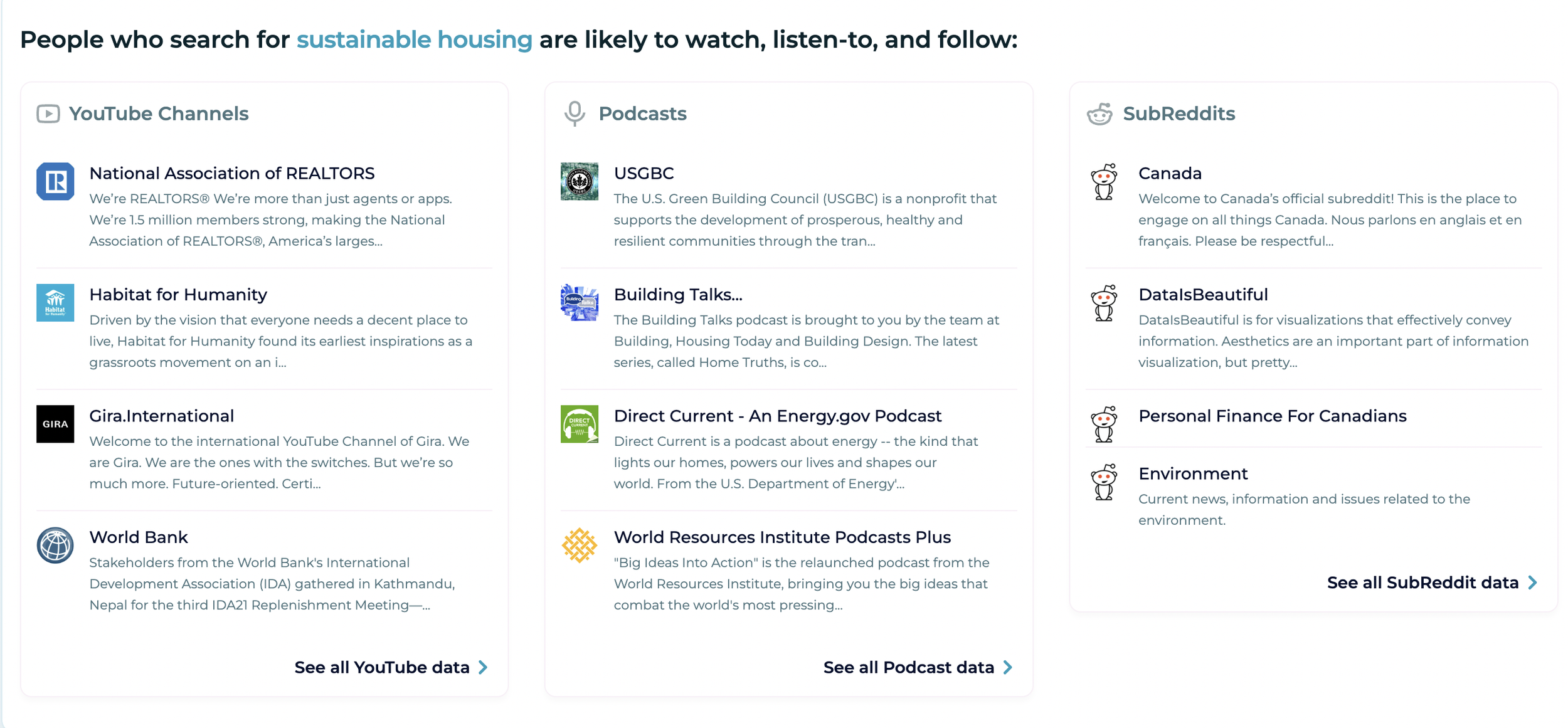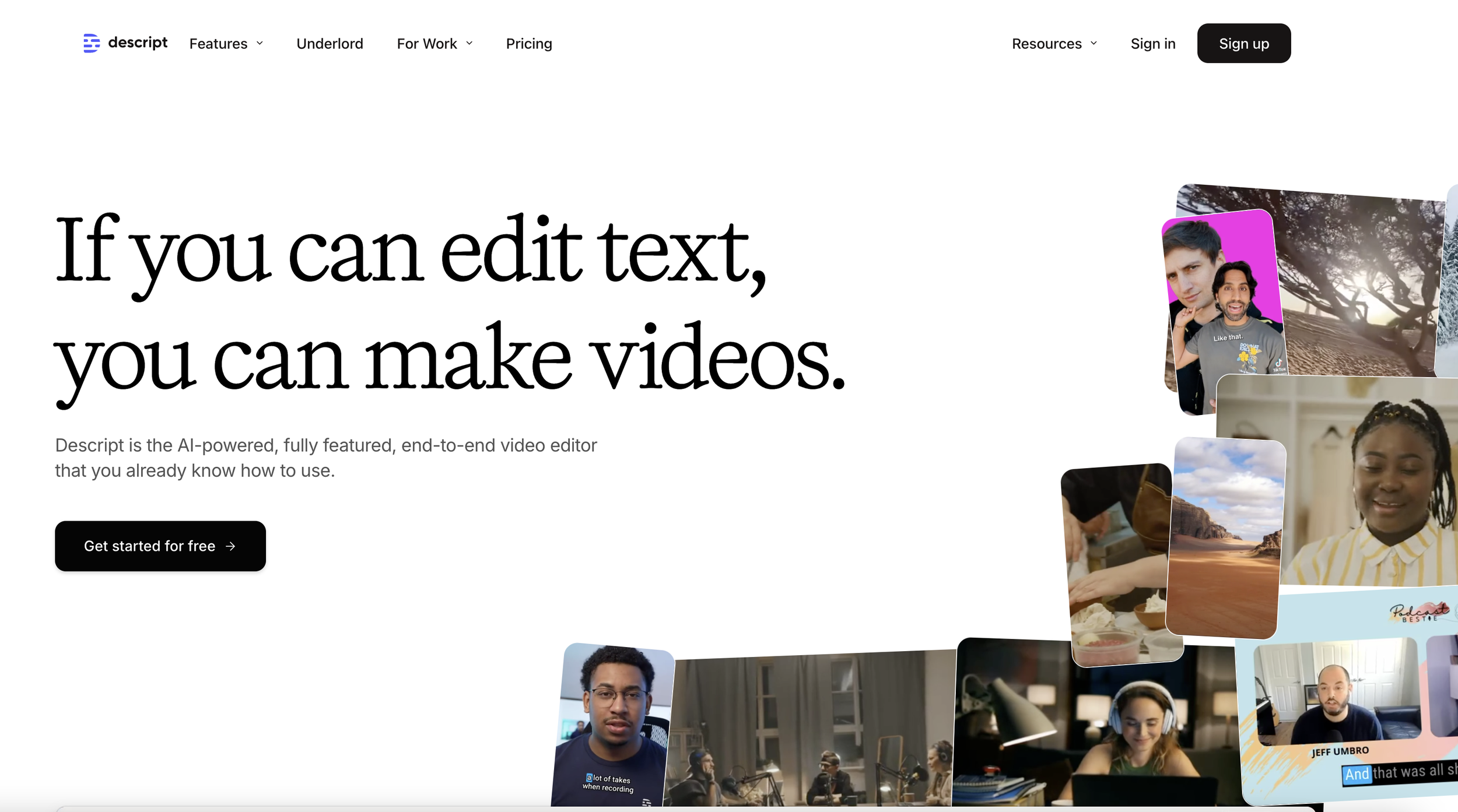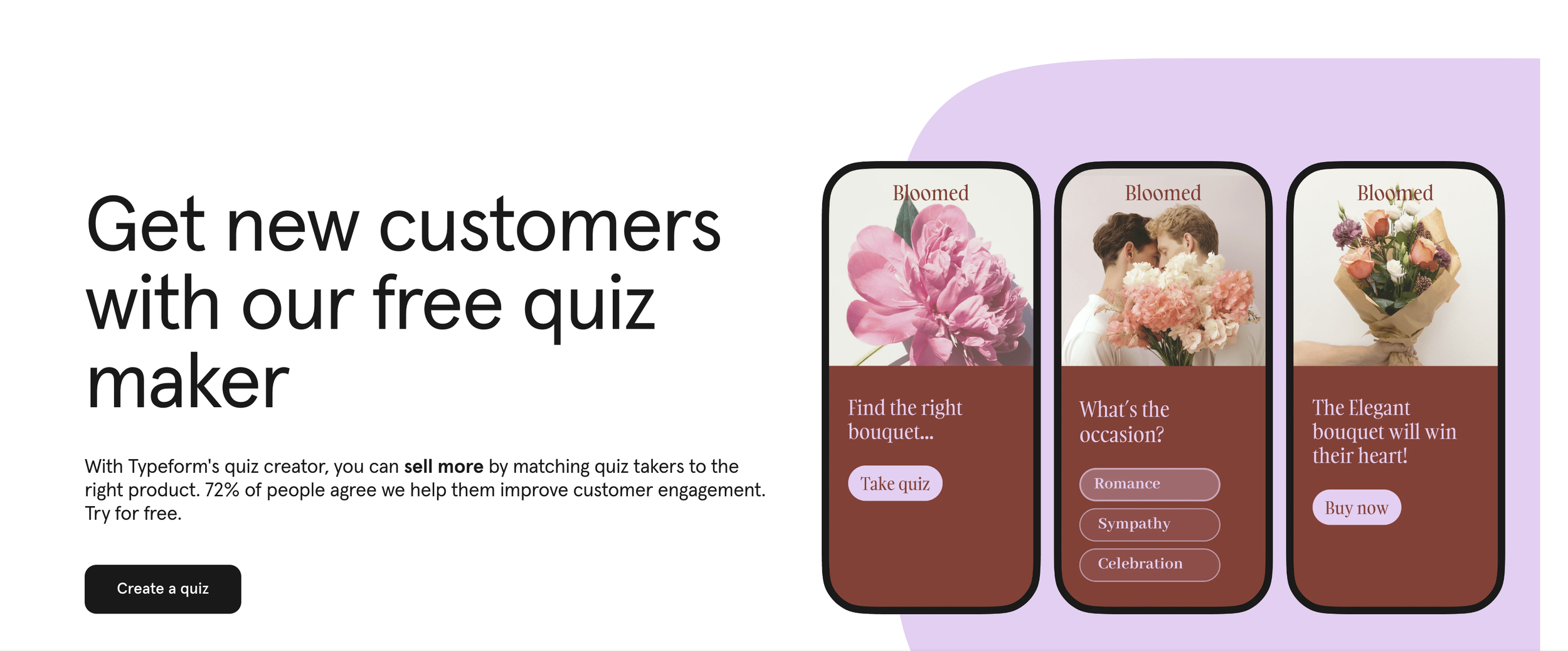Squarespace SEO Guide for 2025 - Leveraging Emerging SEO Trends for Website Visibility
I’ve written a lot about SEO for Squarespace over the years. Most recently I released a very lengthy and comprehensive guide on all things SEO for Squarespace and created The SEO Corner, full of quick guides for improving website visibility. These guides are all recent and touch on some of what we are are going to cover here, but ultimately they are pretty tactical and more about helping people get acquainted with best practices for ranking a Squarespace website, or any website for that matter. They largely focus on Heading tags, keywords, internal linking and so forth. These guides also deep dive into content pillars, pillar pages, and keyword clusters - so they aren’t just full of the same stuff you read everywhere else and I still think you will find a lot of quality information there. However, they don’t address the real elephant in the room: AI, the radical shifts we are seeing in SEO and what it takes to successfully stand out online in 2025.
Before we dig in, are you more of an auditory learner? This guide talks about the importance of creating different content types, making this a great opportunity to provide an audio format, presented as a podcast
Full disclosure, this podcast was created using AI based on content I provided. You may love this format or perhaps you’ll find it a bit weird. Either way, this is a fun exploration of where content is going in 2025. If of course you’d prefer to read, please continue below.
Squarespace SEO Guide presented in podcast format using AI voices
The Changing SEO Landscape
The world of SEO and the entire digital landscape is changing very quickly. You have likely noticed the internet is overflowing with AI generated content. It is somehow pretty hard to miss while blending right in all at the same time. In the beginning of 2024 it was clear many SEO’s and marketing teams were pumping out a ton of AI generated content packed with keywords and appropriate headings to try and rank in search enginges. And it worked for a bit, until it didn’t. In fact, for some companies it actually tanked their rankings.
Google was pretty wise to this approach - they want to deliver the most helpful content, not just an amalgamation of scrapped content that everyone else is throwing up on their website or blog. So here we are, with 2025 quickly approaching and that’s why I’m back writing this guide, similar to my 2024 SEO Guide in some ways, but also, incredibly different. As the AI and the SEO space continues to change, your strategies for reaching your audience will likely need to change along with it.
The Future of SEO and Content Strategy
Today, if you want to rank well, you need to know how to deliver a unique perspective, quality content, and deeply understand your audience. That’s what this guide is about. So, if you’re interested in learning more about the best tools to understand your audience and craft compelling messaging, and strategies for standing out in a sea of AI generated content, please read on.
Understanding Audience Intent for SEO
Keywords and link building have long been foundational to SEO, and for a long time they were very effective. In 2024 and as we move into 2025, simply put, they aren’t enough. Marketers and SEO’s need to meet their audience empathetically and have a truer and better understanding of their pain points and how they can solve their problems. Getting clearer on audience intent is a key component of the shifting SEO landscape. Knowing what your audience is truly searching for, and delivering content that meets those needs, will significantly boost your website’s visibility and engagement.
For instance, consider a user searching for "best yoga mats." They're likely seeking more than just a list; they want reviews, comparisons, user experiences, and maybe even tips on how to choose the right mat. By understanding this deeper intent, you can create content that more effectively addresses their needs.
Understanding your audience's intent is crucial for creating content that resonates with them and meets their needs. Audience intent refers to the underlying motivations and goals that drive users to seek out your content. By decoding this intent, you can tailor your content to be more relevant, engaging, and useful to your audience.
Using The Jobs to Be Done (JTBD) Framework for Better Content Creation
One effective way to understand audience intent is through the Jobs to Be Done (JTBD) framework. Proposed by Clayton Christensen, this framework suggests that customers "hire" products or services to fulfill specific "jobs" or tasks in their lives. By identifying these jobs, you can better understand what your audience is trying to achieve and why they might be consuming your content.
Key Components of JTBD:
Job Statement: Clearly define the task or job that the user is trying to accomplish.
Context: Understand the situational and emotional context in which the user engages with the task.
Motivations: Identify the reasons behind the user's desire to complete the task.
Desired Outcome: Know the result or benefit the user expects to achieve.
Examples of JTBD in Action:
Educational Content:
Job Statement: Learn how to use a specific software tool.
Context: The user is a new employee who needs to get up to speed quickly.
Motivations: The user wants to perform well in their new job and avoid the embarrassment of asking for help.
Desired Outcome: Mastery of the tool to efficiently perform their work tasks.
Content Idea: Create a step-by-step tutorial series, including videos and downloadable guides, aimed at new users. Include practical examples and common troubleshooting tips.
Product Reviews:
Job Statement: Decide whether to purchase a new product
Context: The user is tech-savvy but cautious about spending on new technology.
Motivations: The user wants to ensure value for money and make an informed decision.
Desired Outcome: A clear understanding of the product’s pros and cons to make a confident purchase.
Content Idea: Produce in-depth reviews that cover not just the features but also real-world performance, comparisons with competitor products, and long-term usability insights.
Applying JTBD Across Different Industries
Examining this approach reveals its broader applicability across services, products, online courses, and more. The fundamental focus is on truly understanding what your audience is trying to achieve and meeting that need with targeted content.
While keywords are still important, this approach shifts the emphasis towards understanding user intent. This requires more effort but is far more effective than simply producing generic, regurgitated content. Additionally, this approach builds trust, improves engagement, and offers a unique perspective.
By combining these variables, you're more likely to rank higher in search engines.
How Understanding Audience Intent Helps Craft Valuable Content
By focusing on the jobs your audience is trying to accomplish, you can create content that is not only informative but also highly relevant, engaging, and actionable. This user-centric approach helps in building long-term relationships with your audience, fostering trust, and driving conversions. Here’s a few key ways understanding your audience is a game changer for imrpoving valuable content and therefore improving your visibility in seach engines.
Relevance: By aligning your content with the specific jobs your audience is trying to complete, you ensure that your content is relevant and directly addresses their needs.
Engagement: When your content is tailored to the audience's context and motivations, it becomes more compelling. Readers are more likely to engage with content that speaks directly to their situation and challenges.
Trust: Providing content that leads to the desired outcomes for your audience builds trust. They will see you as a reliable source of information and solutions, making them more likely to return for future content and recommendations.
Conversion: Understanding the audience's intent can also help you create content that guides users towards a specific action, whether it's making a purchase, subscribing to a newsletter, or engaging with other resources you offer.
Leveraging Audience Research Tools for SEO and Content Creation
Sparktoro is a powerful new tool from Rand Fishkin, who certainly knows A LOT about SEO (You may know him from Moz), that can provide detailed information about your audience's online behaviour, including websites they visit, YouTube channels they watch, and podcasts they listen to, and more. This invaluable insight allows you to tailor your content more precisely to match audience interests and behaviours, making your SEO and content creation efforts more effective and targeted. Here’s an example below:
If you're unsure where to start with identifying your audience, consider developing buyer personas. These fictional representations of your ideal customers can help you visualize and understand your target audience better. Create detailed profiles that include demographics, interests, goals, challenges, and online behaviours. These personas will serve as a foundation for your audience research and content strategy.
Additionally evaluating your online marketing strengths and weaknesses (SWOT) helps you understand what content works best for your business. Alongside tools like SparkToro, a digital marketing SWOT can help inform the right platforms to share your content and where to double down on content efforts. Remember, creating good content is important, but so is getting it in front of the right people.
By incorporating audience research into your content strategy, you can create content that speaks directly to your audience's interests and needs. This targeted approach not only improves your SEO performance but also increases engagement, builds trust, and ultimately drives conversions.
Additional Audience Analysis Tools for Better SEO
To deeply understand your audience, you need the right tools. Some of the best tools for audience analysis include:
Google Analytics (GA4)
Embracing Your Brand
Over the past decade there has been huge emphasis on performance marketing resulting in relentless ads across anywhere that would let marketers run ads. If you’ve spent anytime on Instagram over the last several years this comes as no surprise and is glaringly obvious. Fortunately, the future lies in a more comprehensive marketing strategy. Building a strong, resonant brand will be crucial.
Creating meaningful connections with your audience builds loyalty and trust, which are invaluable in a crowded marketplace. Your brand should convey your values, vision, and unique value proposition clearly and consistently across all touch-points.
Connecting Emotionally with Your Audience
One of the most effective ways to emotionally connect with your audience is through storytelling and crafting a brand narrative that aligns with the values and aspirations of your audience. Establishing this connection encourages customer loyalty and can turn casual buyers into lifelong advocates. Building brand advocates and a strong community will continue to be a huge asset in 2025. As social platforms increasingly modify their algorithms to keep users engaged on their sites, creating and nurturing an active community around your brand will become essential.
A loyal community not only enhances engagement and provides valuable feedback but also reduces the need for expensive ad campaigns, making it a cost-effective strategy. In 2025, brands that invest in building strong communities will distinguish themselves in the marketplace and achieve better ROI by maintaining higher retention rates and fostering organic word-of-mouth marketing.
The SEO Benefits of a Strong Brand
Increased User Engagement: High-quality, emotionally engaging content keeps visitors on your site longer, reducing bounce rates—both of which send positive signals to search engines and enhance your search rankings.
Enhanced Social Signals: Emotionally resonant content is more likely to be shared, liked, and commented on across social media platforms. While social signals are not direct ranking factors, they correlate with improved search visibility by increasing your content's reach and engagement.
Brand Mentions and Backlinks: A compelling brand story can attract unsolicited mentions and backlinks from other websites. These inbound links are strong indicators of your content's authority and relevance, boosting your SEO performance.
Reduced Bounce Rates and Higher Dwell Time: By creating a brand that users trust and feel connected to, they are more likely to stay on your site longer. This behavior is interpreted by search engines as a positive user experience, leading to higher search rankings.
Leaning into Video: An Evergreen Content Strategy
Video content is a standout in the era of digital noise. It offers a dynamic way to engage with your audience and can play a critical role in a comprehensive content strategy. Not only does it enhance your ability to tell compelling stories and engage your audience, but it also allows you to stand out in an ocean of AI-generated content, making your brand more human and relatable.
Optimizing Video Content
Here's how you can optimize video content to maximize its impact across various platforms:
LinkedIn Engagement: Short, impactful videos drive higher engagement on LinkedIn. These could include quick tips, customer testimonials, or brief insights into industry trends, fostering professional connections and sharing valuable knowledge.
YouTube Series: Repurpose and transform short videos into a comprehensive YouTube series, offering more detailed explorations of relevant topics. This can help build a loyal subscriber base and establish your channel as an authoritative source in your industry.
Website Content: Longer, more detailed videos hosted on your website can improve on-site time and provide deep value to visitors. These videos can include tutorials, explainer videos, webinars, and deep dives into specific subjects, enhancing user experience and retaining visitors longer.
Blog Posts and Guides: Transcribe your videos into blog content or integrate them into detailed guides and reports. This approach not only diversifies your content types but also caters to different audience preferences, whether they prefer watching videos or reading articles.
The Versatility of Video Content & Leveraging Search Trends
By repurposing video content, you maximize its value and reach across different platforms and formats. Video's versatility allows it to be utilized in various ways:
Breaking Down Into Smaller Clips: A longer video can be dissected into several shorter pieces for social media distribution.
Developing Comprehensive Content: These smaller videos can be compiled into a series or used to complement written content, creating a seamless and enriched content experience.
TikTok as a Search Engine: Among younger generations, TikTok is rapidly becoming its own search engine. Users on this platform are increasingly using it to find information and discover content. Creating informative, engaging TikTok videos can help your brand tap into this trend, making your content more discoverable to a younger audience.
Boosting Discoverability: Video content can significantly boost your SEO efforts, especially on platforms like TikTok and YouTube, where optimization can increase discoverability and engagement. Properly optimized videos with relevant keywords, captions, and descriptions can enhance your visibility and drive more organic traffic.
Understanding Zero-Click Content: The rise of zero-click content, a term coined by Amanda Natividad, emphasizes creating valuable content that engages users directly on the platform where they consume it, without requiring a click-through to your website. Whether it's informative TikTok clips, interactive Instagram Stories, or engaging LinkedIn posts, understanding and leveraging zero-click content is crucial for addressing user needs and enhancing engagement in a holistic marketing strategy.
Veed.io and Canva provide robust, user-friendly tools that make creating stunning videos accessible to anyone. Both platforms offer features like adding music, uploading GIFs, and creating smooth transitions to enhance your content. Leaning into video content is not just a trend but a smart, sustainable strategy for 2025 and beyond. Its ability to humanize your brand, provide educational value, and enhance engagement across multiple platforms make it a cornerstone of an effective digital marketing strategy. By optimizing and reusing your video content, you can reach a wider audience and make a bigger impact. Understanding trends like TikTok's rise and the preference for zero-click content will keep you ahead of the game and meet your audience's needs.
source: www.veed.io
Additionally, Descript, featured above offers AI-powered features such as automatic transcription, filler word removal, and studio-quality sound enhancement.
Quality Over Quantity: Making Your Content Stand Out
Focusing on visual storytelling is an excellent way to enhance your content efforts. For example, lean into scrollytelling by breaking up complex content into easily scannable sections. Additionally, if appropriate lean into infographics to present complex data in an easy-to-understand visual format. This not only helps users grasp information quickly but also makes your content shareable and more engaging.
By utilizing a variety of visual storytelling methods, you can create a richer, more engaging experience for your audience. Today, there are so many wonderful tools out there to help you do this. Platforms like Canva can create stunning infographics with ease while tools like Supademo can help you drive adoption and top of funnel sign ups by giving people the ability to create create and share interactive product demos. You may also want to consider using tools like Typeform or interactive widgets, quizzes, calculators and polls to increase content engagement.
Conclusion
SEO in 2025 is about much more than keywords and links - though these definitely still play a role. Rather, focus on the big picture - offering a unique perspective, creating high-quality content, deeply understanding your audience, and taking a holistic approach to building and nurturing your brand. From here, using SEO best practices like internal linking and compelling headlines help ehnance your content but focusing on the bigger picture sets a much stronger foundation for your SEO strategy. By reaching your audience with the right message at the right time and leaning into versatile versatile content strategies like video, you can create a meaningful and lasting impact.
By staying ahead of these trends and continuously refining your approach, you can ensure that your Squarespace website not only ranks well in search engines but also truly connects with and provides value to your audience. As we embrace these shifts in SEO, the goal remains clear: to create content that resonates, engages, and delivers real value.
Actionable Steps for Boosting Your Squarespace SEO in 2025
Leverage Tools: Lean into audience research tools to gain deep insights into your audience's behaviours and interests.
Content Strategy: Develop a content strategy focused on audience intent rather than just keywords. Remember, you want to meet people’s needs with content, not just spin up the same article as everyone else. Concentrate on providing a unique perspective.
Video Content: Incorporate video into your strategy, optimize the platform best suited to your audience, and repurpose it across various platforms. This is not only a smart marketing strategy in terms of efficiency and developing a content mix, but also helps you connect with your audience and improve engagement and shareability.
UX Design: Invest in UX design and lean into storytelling to create immersive and engaging content.
Brand Building: Focus on building a strong, authentic brand that resonates with your audience.
Looking for help with your web design, SEO and marketing efforts? Visit the pages below.












